Subwavelength Ultrasonic Imaging of Additively Manufactured Nuclear Structures and Components (DOE NEUP 2023-2026)
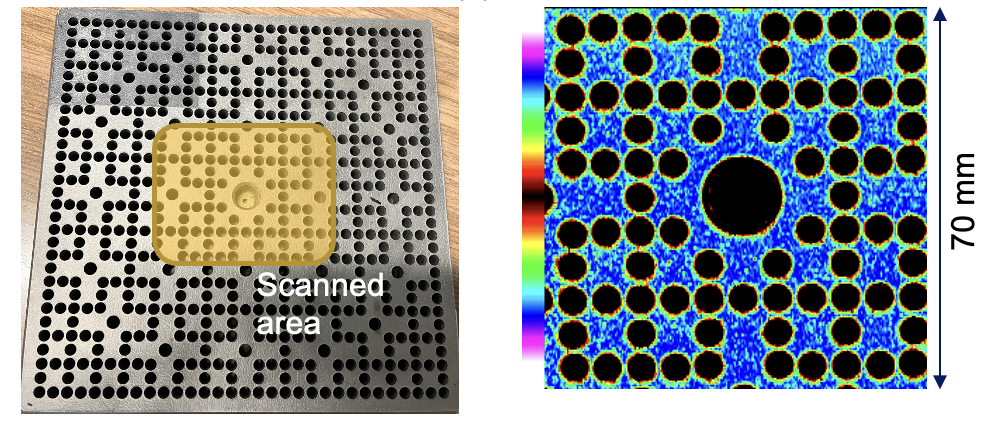
This project aims to leverage phononic crystals and metamaterials, to achieve subwavelength resolution, overcoming the limitation of conventional ultrasonic systems. In this way, an advanced ultrasonic imaging system can be developed for rapid, nondestructive quality assessment of additively manufactured (AM) nuclear components. Preliminary analysis using conventional ultrasonic methods, such as the immersion ultrasonic has been used to accurately assess the quality of additively manufactured components to show defects in the AM parts.
Phononic crystals (PC) help improve the resolution of existing ultrasonic systems by focusing the acoustic beams on to the sensor surface. Existing commercially available PC are larger in size and are produced using conventional 3D printing or manufacturing. This limits their usage to a high ultrasonic frequency range. Nanoscribe is a two-photon lithography process that can produce 3D resin structure at micro level. In this work, we are also working to produce PC structures using Nanoscribe that will be embedded on the surface of the sensor. This will be immersed in water for testing AM structures to evaluate varying levels of defects.
High Temperature Ultrasonic Sensor for Advanced Reactors (DOE NEUP 2022-2025)
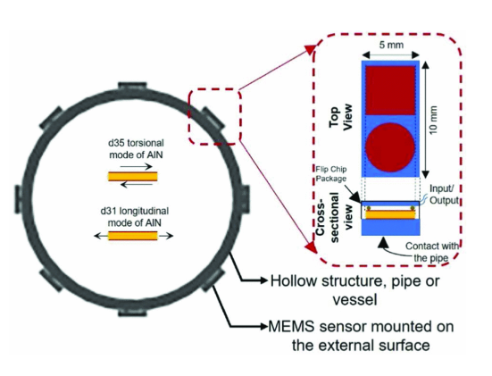
Sodium-cooled fast reactors (SFRs) operate at high temperatures (around 540°C) exceeding the capabilities of conventional acoustic emission (AE) sensors used for crack detection in piping systems. This study investigates the development of a high-temperature AE sensor utilizing a silicon carbide (SiC) base wafer and a sputtered aluminum nitride (AlN) piezoelectric layer. The (002) crystal orientation of AlN is targeted to achieve optimal piezoelectric coefficient. X-ray diffraction (XRD) and energy-dispersive X-ray spectroscopy (EDX) will be employed to verify the crystal orientation of the deposited AlN thin film, while piezoresponse force microscopy (PFM) quantifies the piezoelectric coefficient. Metal electrodes are deposited via electron beam evaporation to complete the sensor structure.
This study presents the development of a high-temperature AE sensor with potential application in SFRs. The combination of SiC and AlN materials offers the necessary thermal stability and piezoelectric properties for effective crack detection. The proposed packaging approach aims to improve sensor sensitivity. Ball drop testing will provide valuable insights into the sensor’s performance at elevated temperatures. The successful development of this sensor could significantly enhance the safety and reliability of SFRs.
Towards Commercialization of MEMS AE Sensor (NSF PFI TT 2020-2023)
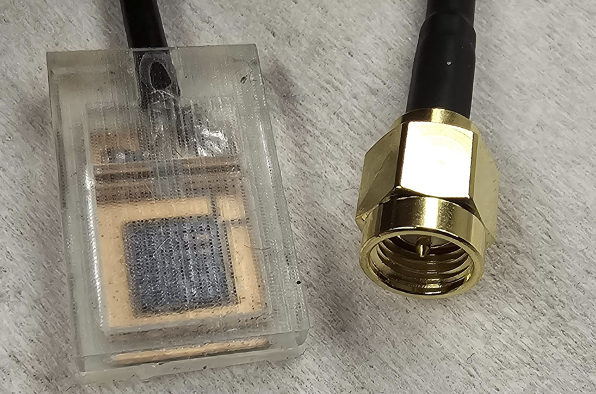
MEMS sensors have advantages of light weight and low cost as compared to conventional bulky sensors. They can be mass manufactured rapidly and reliably. The acoustic stability and quality of piezoelectric thin films increase their role in MEMS device manufacturing. Piezoelectric MEMS resonators have been developed sensing variety of input signals such as wine fermentation, density and viscosity sensing in liquids, dew point temperature. The output principle is based on monitoring changes in resonant behavior of sensor with respect to liquid properties.
In this study, piezoelectric MEMS resonators are designed to sense mechanical vibration generated in solids by crack surface movement, known as acoustic emission (AE). Piezoelectric MEMS resonators have limited sensitivity and bandwidth as compared to conventional bulky piezoelectric AE sensors. To break this limitation, multiple (16) highly resonant MEMS piezoelectric sensors are connected in an array such that the total response is amplified by the constructive interference of carefully selected frequencies.
The designed sensors are microfabricated using a peizo-MEMS manufacturing process. The manufactured sensor is then post-processed using a customized PCB and 3D printed package to reduce the signal to noise ratio, while maintaining a higher sensitivity level. The robust package is tested against other commercially available sensors using Pencil Lead Break (PLB) and Ball drop test to validate its performance on various materials. Currently we are focused on bulk producing these sensors to validate their performance in the industrial environment.
Multi-frequency MEMS Acoustic Emission Sensor (NSF CAREER 2016-2020)
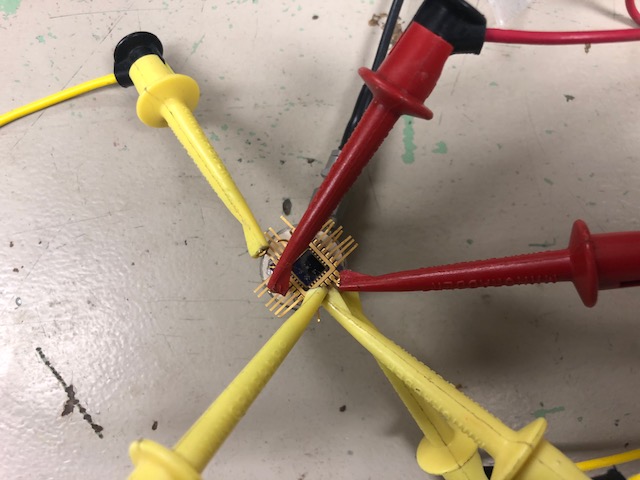
MEMS sensors have advantages of light weight and low cost as compared to conventional bulky sensors. They can be mass manufactured rapidly and reliably. The acoustic stability and quality of piezoelectric thin films increase their role in MEMS device manufacturing. Piezoelectric MEMS resonators have been developed sensing variety of input signals such as wine fermentation, density and viscosity sensing in liquids, dew point temperature. The output principle is based on monitoring changes in resonant behavior of sensor with respect to liquid properties.
In this study, piezoelectric MEMS resonators are considered to sense mechanical vibration generated in solids by crack surface movement, known as acoustic emission (AE). Piezoelectric MEMS resonators have limited sensitivity and bandwidth as compared to conventional bulky piezoelectric AE sensors. To break this limitation, multiple highly resonant MEMS piezoelectric sensors are connected in an array such that the total response is amplified by the constructive interference of carefully selected frequencies.
Noise blocking with Acoustic Metamaterials (NSF CAREER)
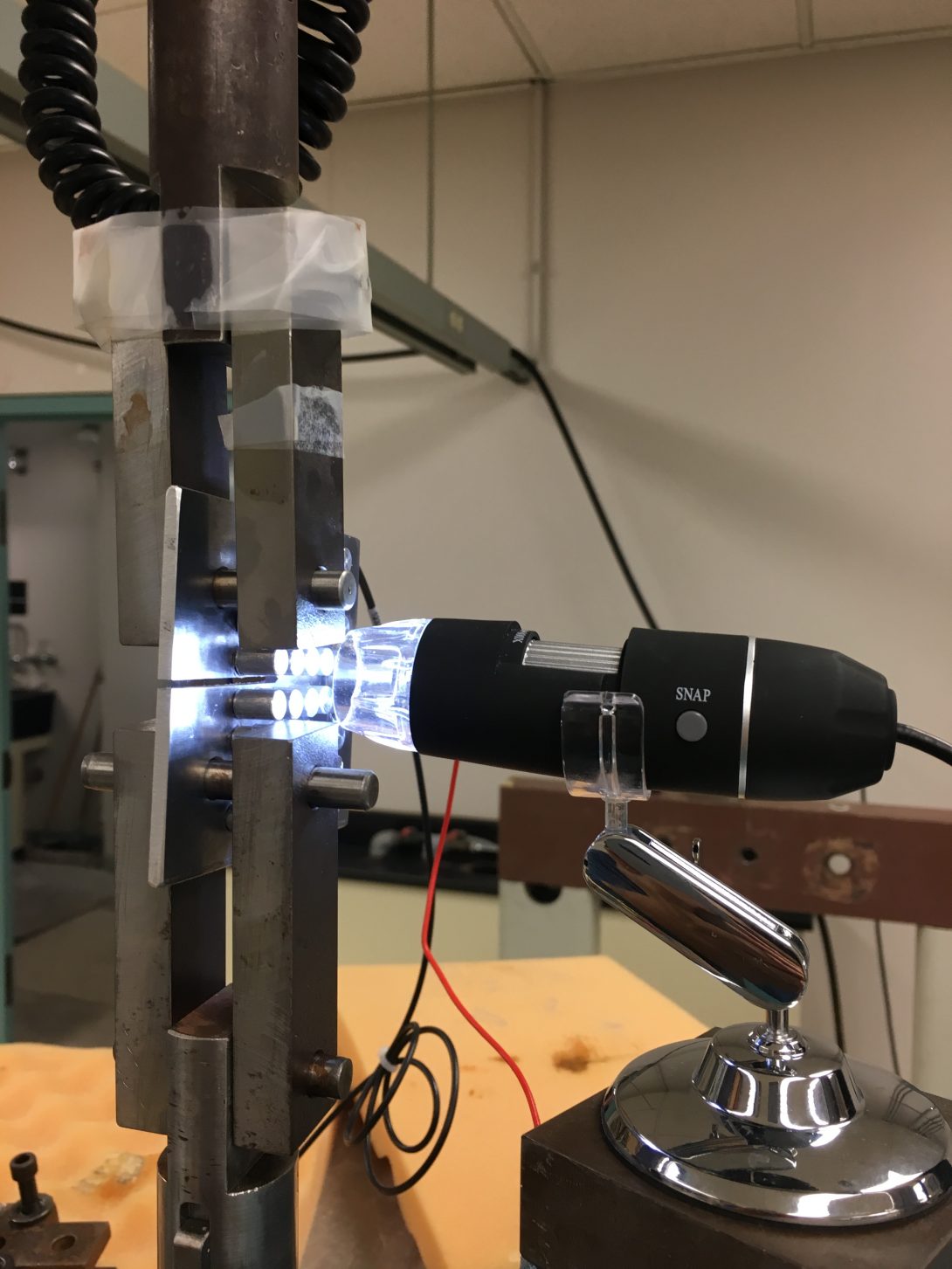
Among many NDE/SHM techniques, acoustic emission (AE) method provides continuous real-time data from active defects in structures. The AE method has been utilized to detect fatigue crack in metallic structures since 1970s. The AE method is based on detecting elastic waves released by sudden stress–strain changes within a material. The AE method has been applied for real-time damage detection, localization and characterization of fatigue crack in metallic structures. In a typical bridge application, minimum three sensors are required to monitor the localized crack activity such that two-dimensional localization can be achieved, and the influence of secondary emissions are minimized.
In this study, friction emissions are blocked by applying elastic metamaterial filters in the path between friction emissions and AE sensor such that single AE sensor is sufficient to effectively detect the fatigue crack growth.
Noise isolation to monitor a particular location in plate-like structures is developed using two-dimensional phononic crystals (PCs) such that a single AE sensor is sufficient to monitor the crack activity. PCs, also known as acoustic metamaterials, are artificial composite, man-made periodic systems creating new responses through physical constraints in the constituent materials.
We demonstrated that we minimize the detection of friction emissions and the data set represents the primary emissions due to crack growth. As the data rate is reduced into a level such that in situ data processing and wireless transmission becomes possible.
Effective Distribution of Bolt Holes in Gusset Plates for Early State Damage Detection (NSF CAREER)
Bolted connections in steel truss bridges form the weakest link due to higher risk of defect development due to stress corrosion cracking or galvanic corrosion between the connected elements. In conventional practice, bolts are placed based on minimum and maximum spacing requirements guided by AISC. In this study, the detectability of defects is added as a design variable when the bolts are placed. The periodic arrangement of bolts introduces unique frequency response that can be utilized in the evaluation of gusset plates based on the hypothesis that the periodic response is influenced by the presence of crack or the section loss.
Focusing Elastic Waves in Pipe-like Structures using GRIN Lens (NSF CMMI 1914663)
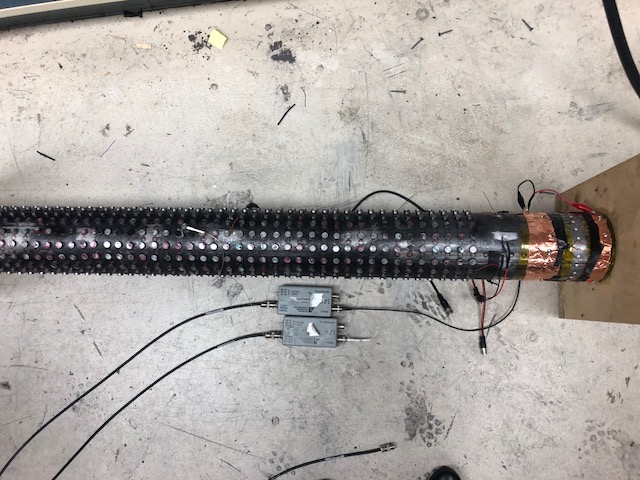
Metamaterials and phononic crystal (PC) structures are of growing interest due to their ability to manipulate and control the propagation of elastic waves in ways that are not possible in conventional materials. They are artificially engineered periodic structures composed of locally resonant unit cells or PCs. Due to their unique properties such as band gaps and the ability to slow the velocity of waves, metamaterials/PC structures offer the potential for a variety of applications including vibration and noise attenuation, frequency filtering, cloaking, sensing, and refractive acoustic devices among others.
We explore a novel conformal Gradient-Index Phononic Crystal (GRIN-PC) lens integrated within a pipe to amplify ultrasonic wave modes used in guided wave testing of pipelines toward enhanced sensing and improved damage detection. These refractive elastic metastructures can be created by engineering the dispersion curves to focus wave energy which can also benefit many applications such as energy harvesting, sensing and subwavelength imaging. The proposed conformal lens is composed of an array of cylindrical steel stubs attached to outer surface of the steel pipe which are tailored according to the hyperbolic secant profile of refractive index around the circumference of direction to focus the guided wave energy transmitted by ultrasonic wave in axial direction.
Real-time Weld Monitoring using Acoustic Emission and Ultrasonics (DMDII, current MxD)
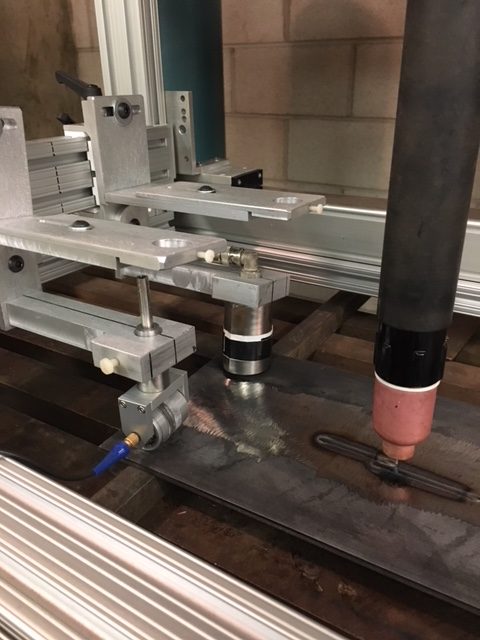
The problem is tackled by integrating multiple sensor outputs into a machine learning algorithm. With proper real-time weld monitoring methods, weld defects are expected to be recognized, and the welder can correct the weld parameter immediately. Whether in a manual or an automated weld process, the experience of the welder is a decisive factor. In addition, it is difficult for the welder to make a rapid and appropriate decision with a high number of parameters from the welding machine and monitoring system. Meanwhile, with a manual decision involved, the automaticity of the weld is limited. With the aim to solve this problem, intelligent decisions in response to process and monitoring variables offer a great potential solution. Through building a training set, machine learning algorithms can analyze the data—including weld parameters and monitoring variables during the weld process—assess the weld quality, and give a reasonable assessment. By keeping collected data and improving the training set during the weld, the accuracy of the machine learning algorithm can subsequently be improved over time.
The automated weld quality assurance can improve efficiency and productivity. In this study, real-time weld quality assurance approach using acoustic emission (AE) and air-coupled ultrasonic testing (UT) is studied. The in-situ monitoring system evaluates the changes in weld size leading to burn through by changing the weld heat input. While UT method provides quantitative information about the weld state, any localized surface discontinuity causes sudden surges in the AE energy indicating nonuniform welding qualitatively. Passive and active nondestructive evaluation methods should be combined to monitor weld quality real time for qualitative and quantitative assessment.
The sensor data utilized in the machine learning algorithm include acoustic emission (hit driven and time driven) and welding data (gas flow rate, current and voltage inputs). The acoustic emission (AE) associated with weld parameter monitoring is chosen as the real-time monitoring methods for automated welding. That is because a variety of acoustic activities are generated within the welding process. The algorithm is evaluated using data recorded at three laboratories in UIC, ITW Miller, and John Deere. Multiple machine learning algorithms are tested.
Microstructure Characterization by Means of Nonlinear Ultrasonics and Acoustic Microscope (NSF CMMI 1463501 and ONR)
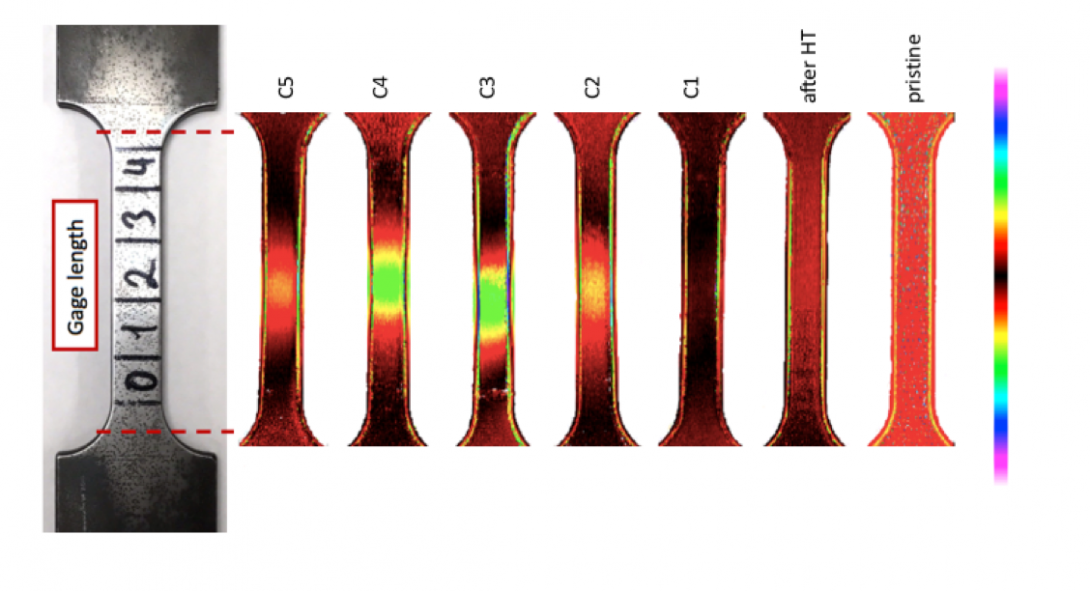
In this study, the creep damage in stainless steel 410 specimens are assessed in the immersed nonlinear ultrasonics experimental setup by integrating third harmonic generation method and the Superlattice (one dimensional metamaterial). Superlattice is used with the purpose of blocking the non-linearity generated in water and instruments. It is expected that the calculated non-linearity in the received signal consists of only the non-linearity of micro-structural features in solid. Consequently, the sensitivity of the nonlinear ultrasonics to detect the micro-structural changes in materials is improved.